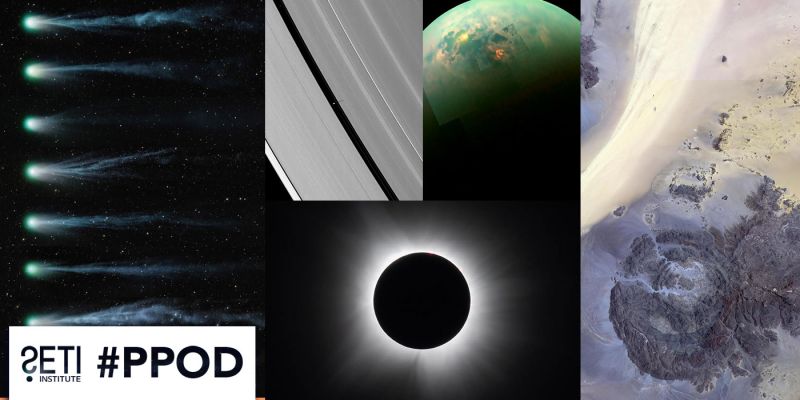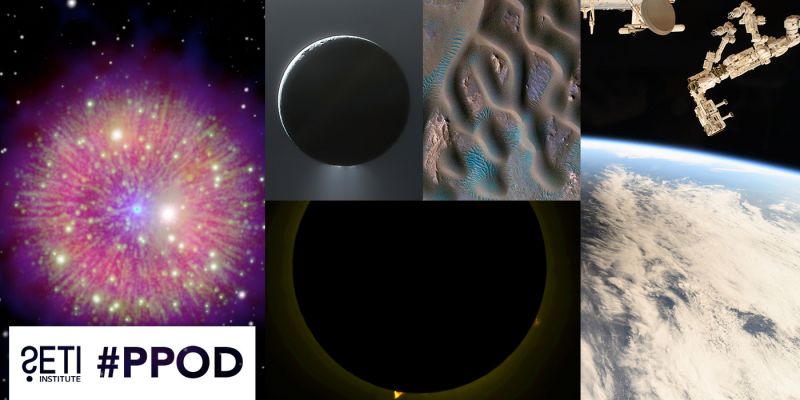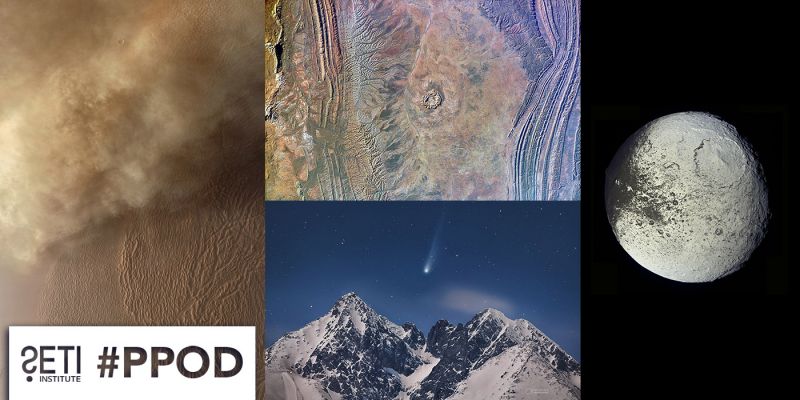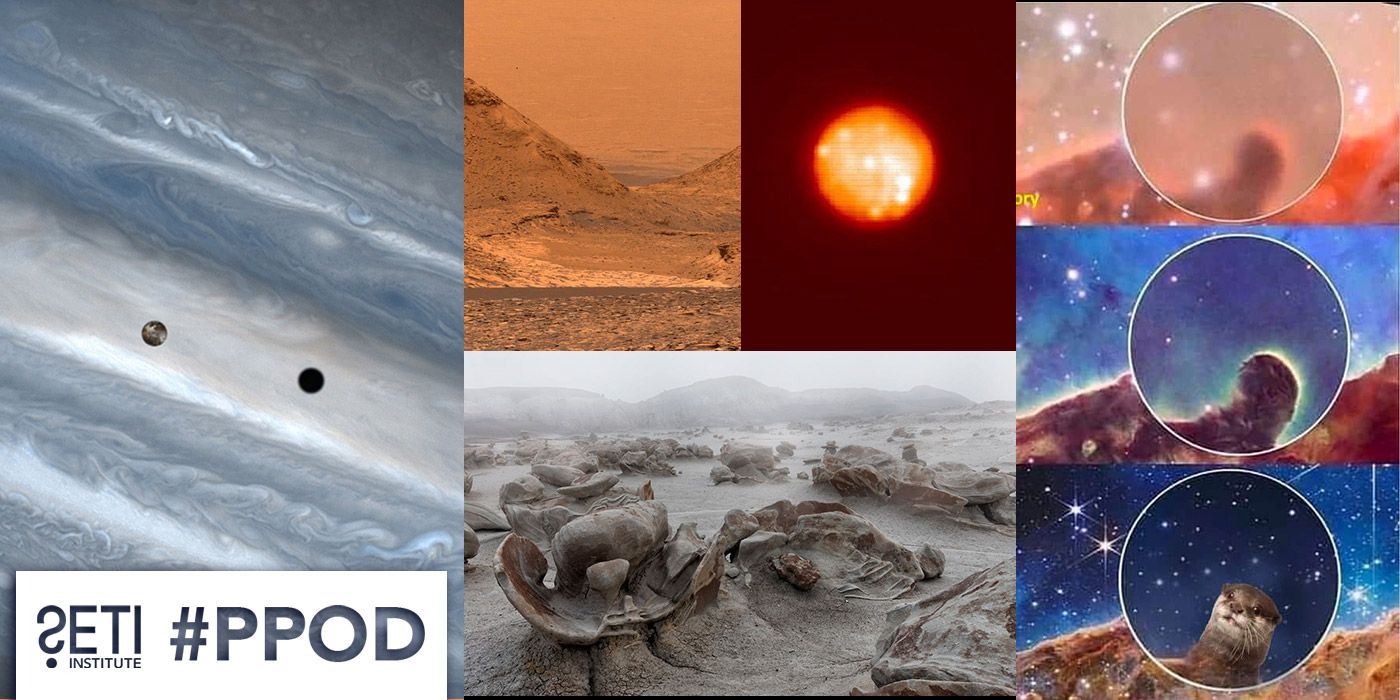
Planetary Picture of the Day
Week of March 4, 2024
Mars, Io, strange rocks on Earth, and a bit of silliness.
Monday, March 4, 2024
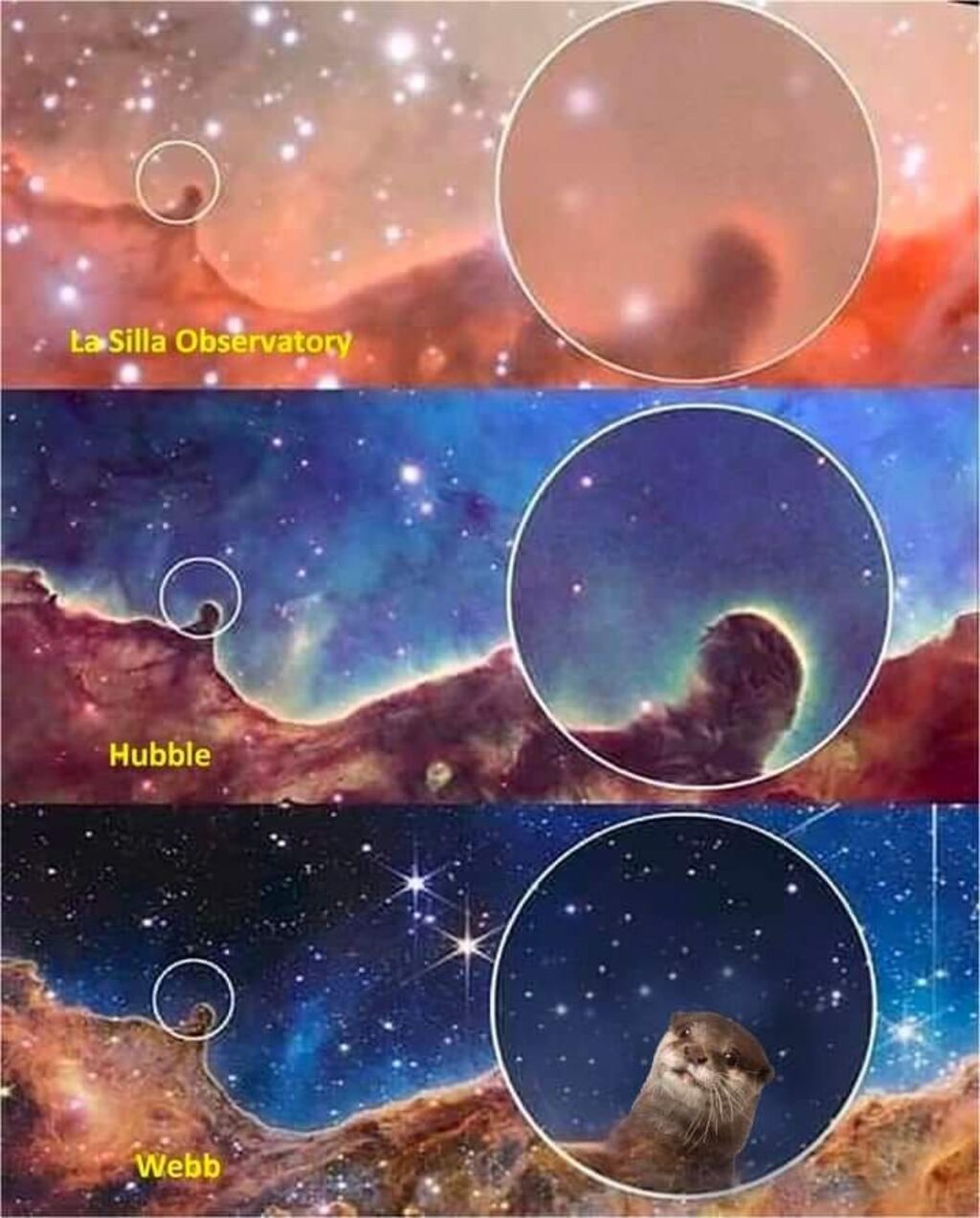
Cosmic Cliffs in Otter Space
Let's start the week with a significant otter discovery in otter space discoveries. Hopefully, this will put a smile on your face this Monday!
The images in question are of the Cosmic Cliffs in the Carina Nebula and detail the progression of observations from ground- to space-based telescopes and to the wonder of JWST.
Tuesday, March 5, 2024
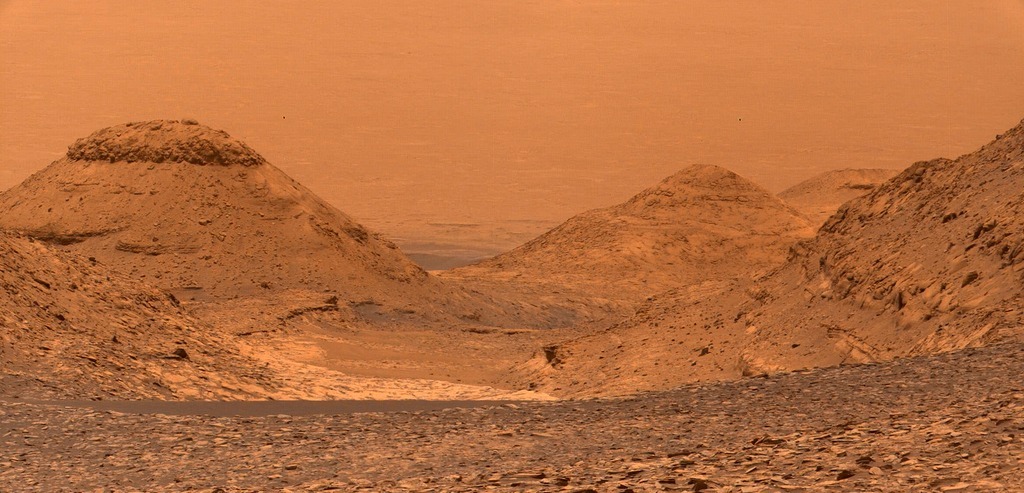
Martian Landscape
Absolutely gorgeous new (Feb 29th) view taken by NASA's Curiosity rover on Mars, looking back down the slope of Mt. Sharp in the center of Gale Crater.
Wednesday, March 6, 2024
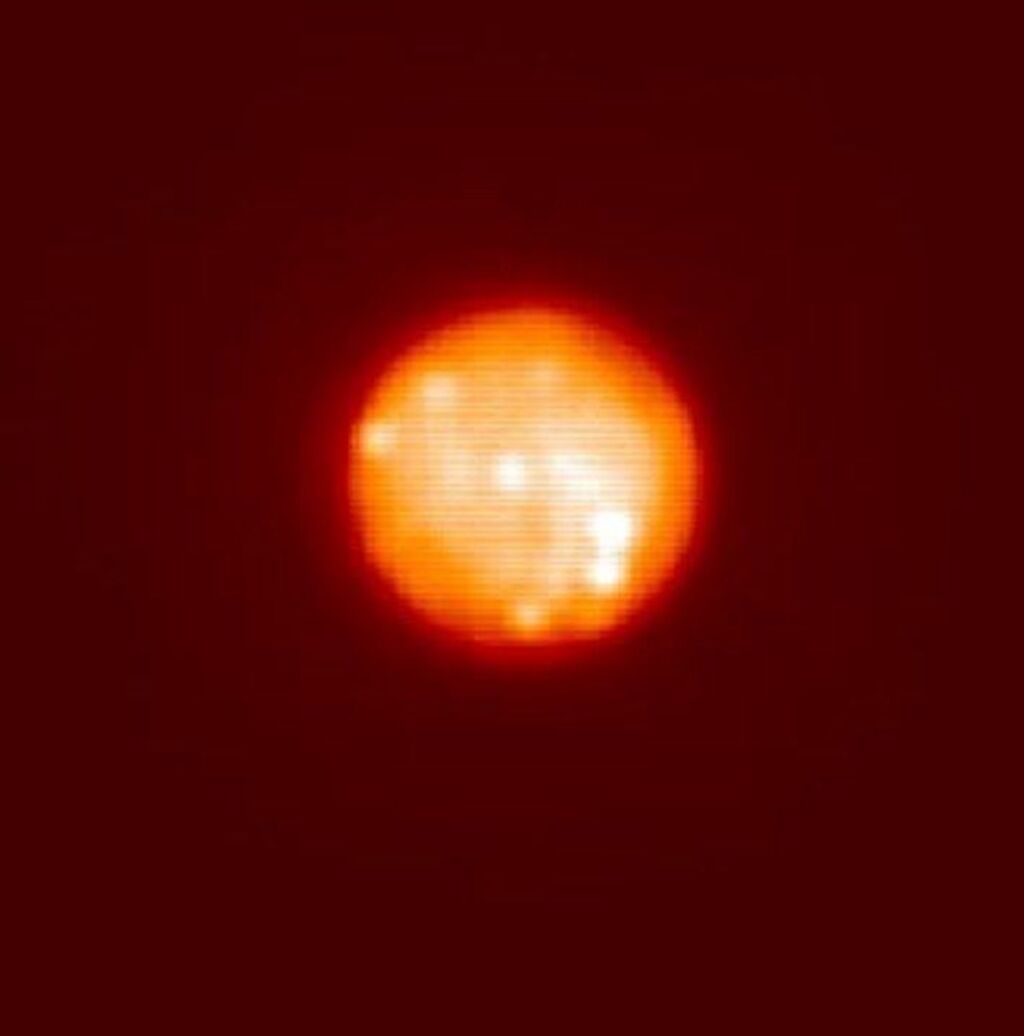
Adaptive Optics Allows Earth-Based Monitoring Of Io’s Fiery Show
This image from the Keck Observatory on Mauna Kea shows effusive (slow) volcanic eruptions and high-temperature outbursts on Jupiter’s tiny moon, Io. Details as small as 100 km (60 miles) are visible on the moon’s surface.
Thursday, March 7, 2024
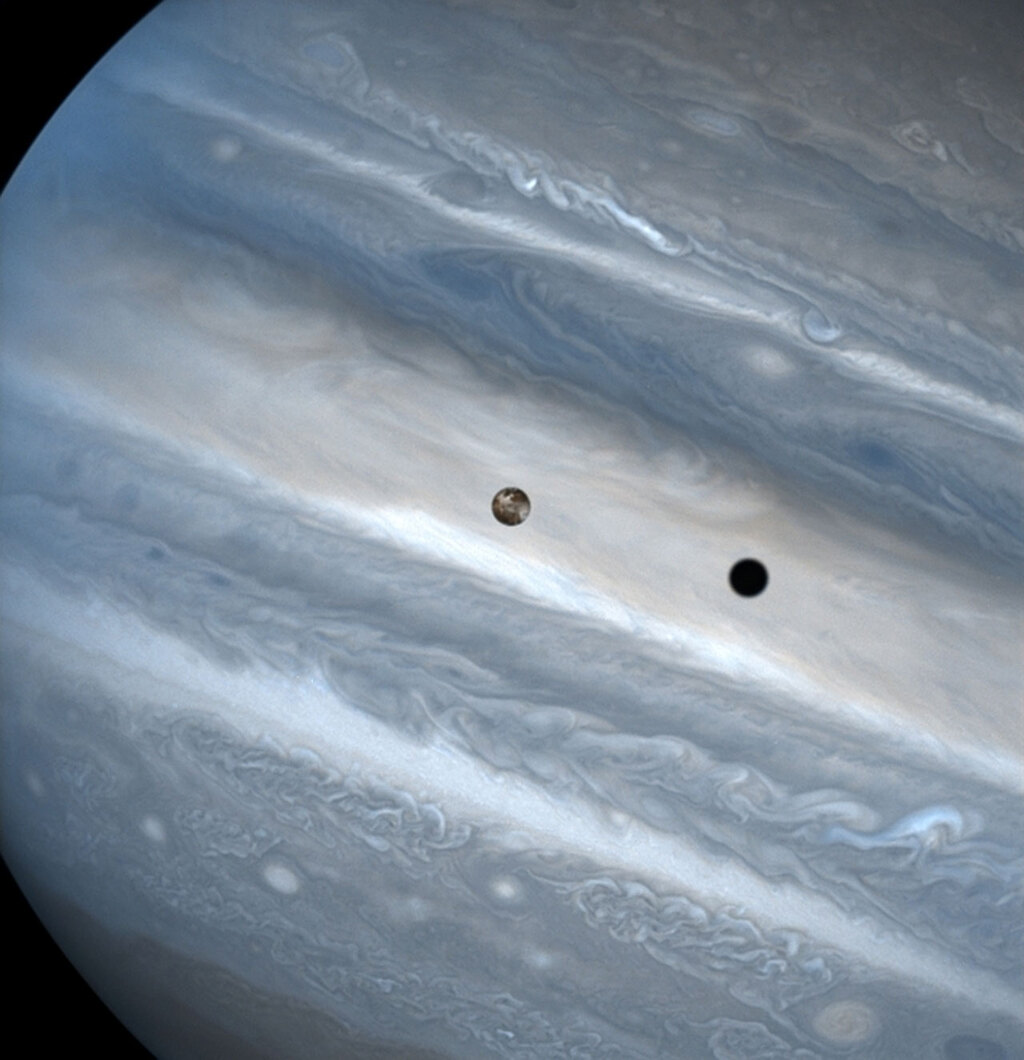
Io transit of Jupiter
The conspicuous black spot on Jupiter is Io's shadow and is about the size of the moon itself (2,262 miles or 3,640 kilometers across). This shadow sails across the face of Jupiter at 38,000 mph (17 kilometers per second). The smallest details visible on Io and Jupiter measure 93 miles (150 kilometers) across, or about the size of Connecticut.
Friday, March 8, 2024
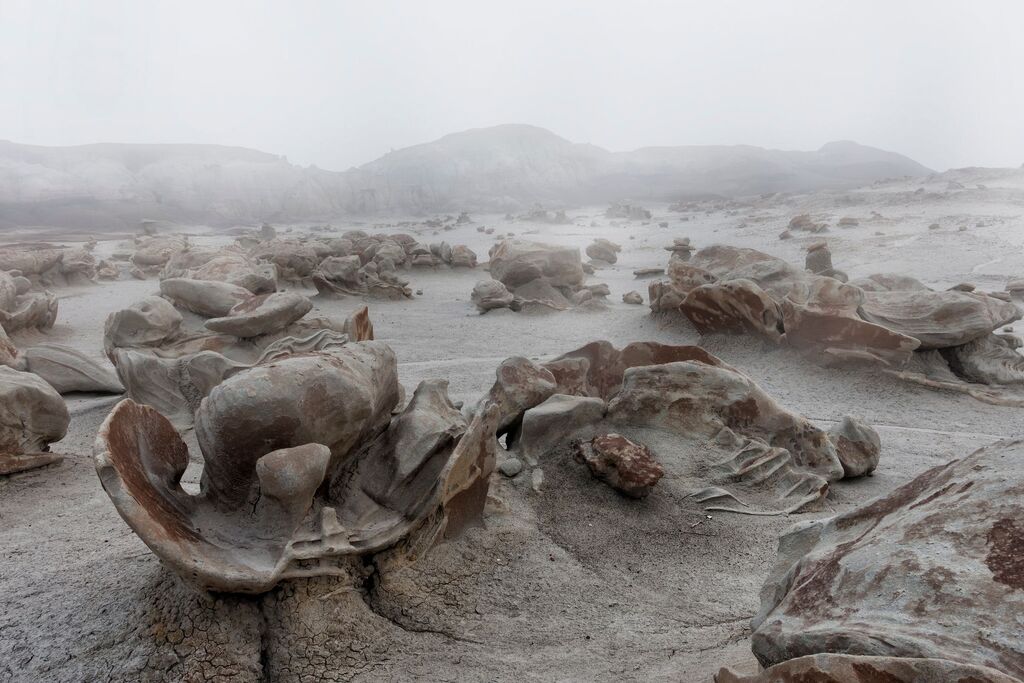
The Bisti Badlands
These surreal rock formations are some of New Mexico's greatest treasures. The Bisti/De-Na-Zin Wilderness is a 45,000-acre (18,000 ha) wilderness area located in San Juan County in the U.S. state of New Mexico. Sediments that created them were deposited 75 million years ago, as the dinosaurs still roamed the Earth. Then, millions of years of erosion formed these residual formations. Once covered in swamps and deltas of the Western Interior Seaway, the area was filled with sediments and organic materials in prehistoric times. This particular image shows a formation called the "cracked eggs", which are the result of differential erosion between hard and soft sediments.

